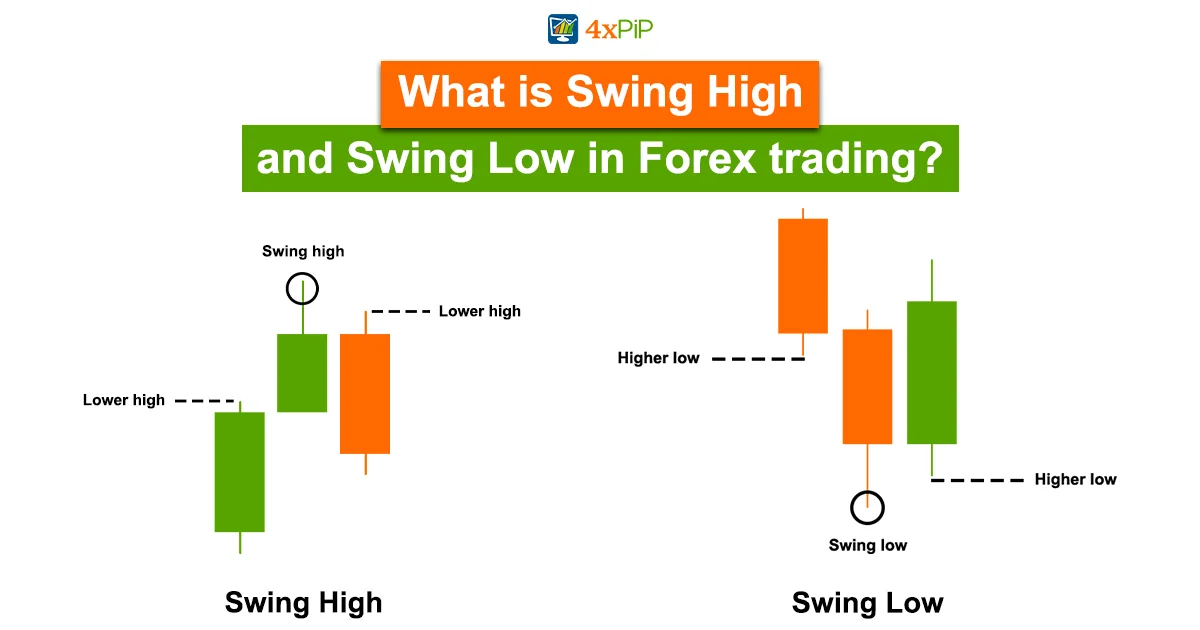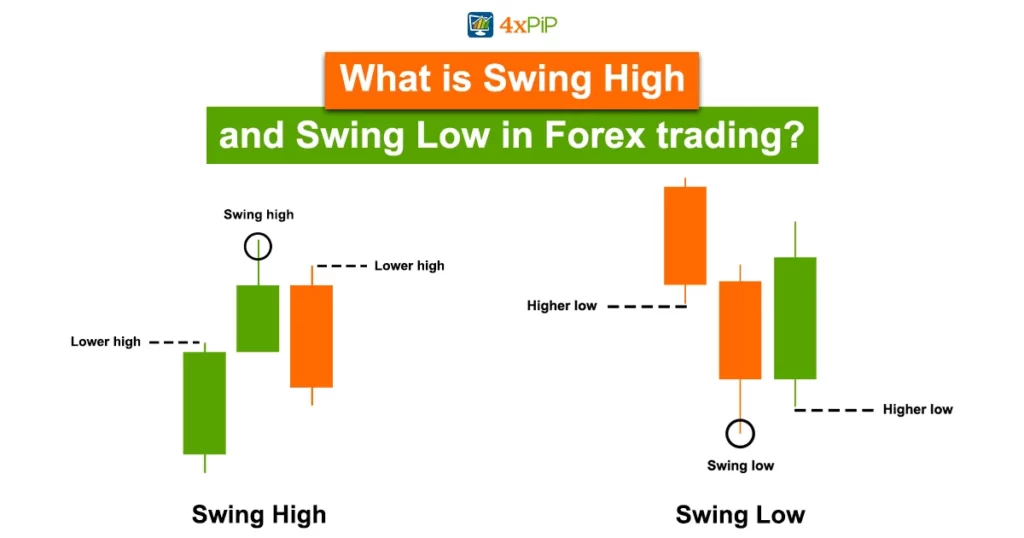In trading, it’s crucial to know about swing lows and swing highs. These terms help traders figure out trends and make smart choices. In this guide, we’ll explain swing lows, swing highs, and useful trading strategies linked to these important indicators.
What is Swing Low?
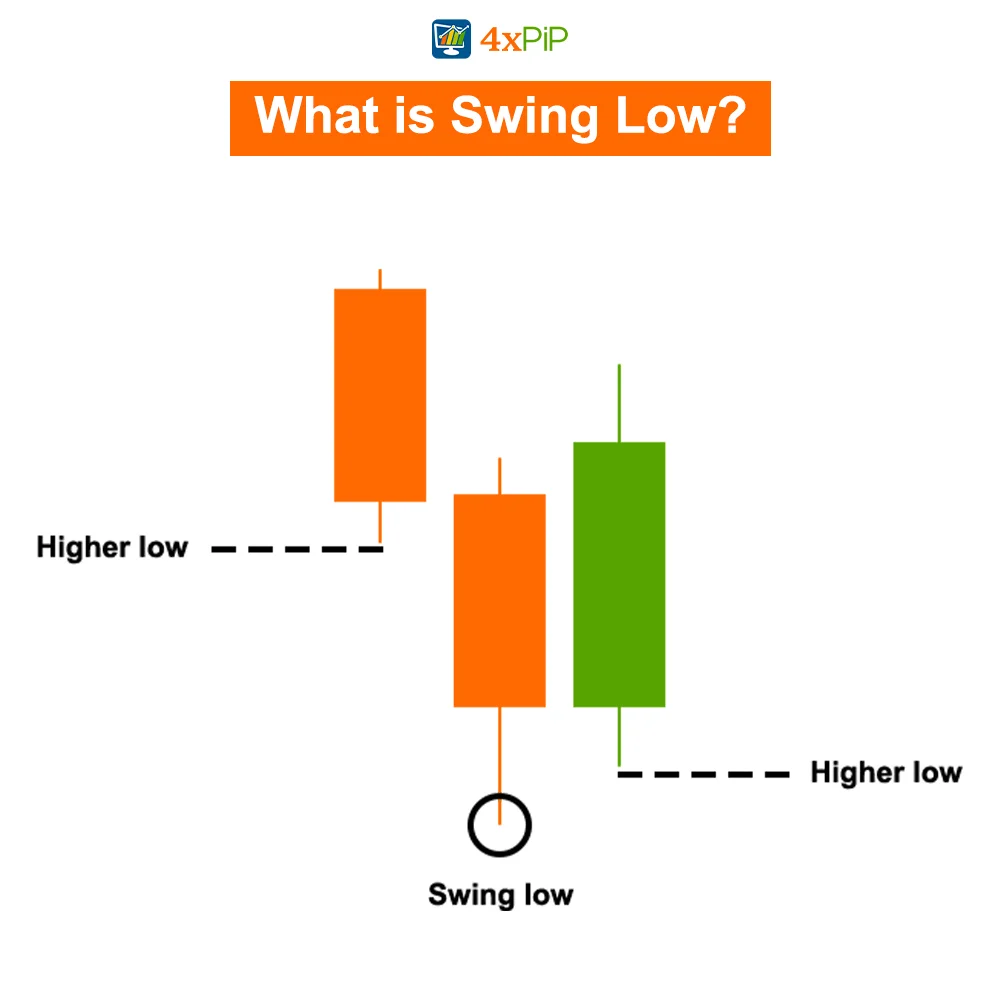
Swing low is a phrase in technical analysis that talks about the lowest points in a stock’s price or an indicator within a short time, typically less than 20 trading days. It happens when the price is lower than all the other prices around it. The opposite is called a swing high. Traders use swing lows and highs to figure out trading plans, where the trend is going, and how much the price might change.
What is Swing High?
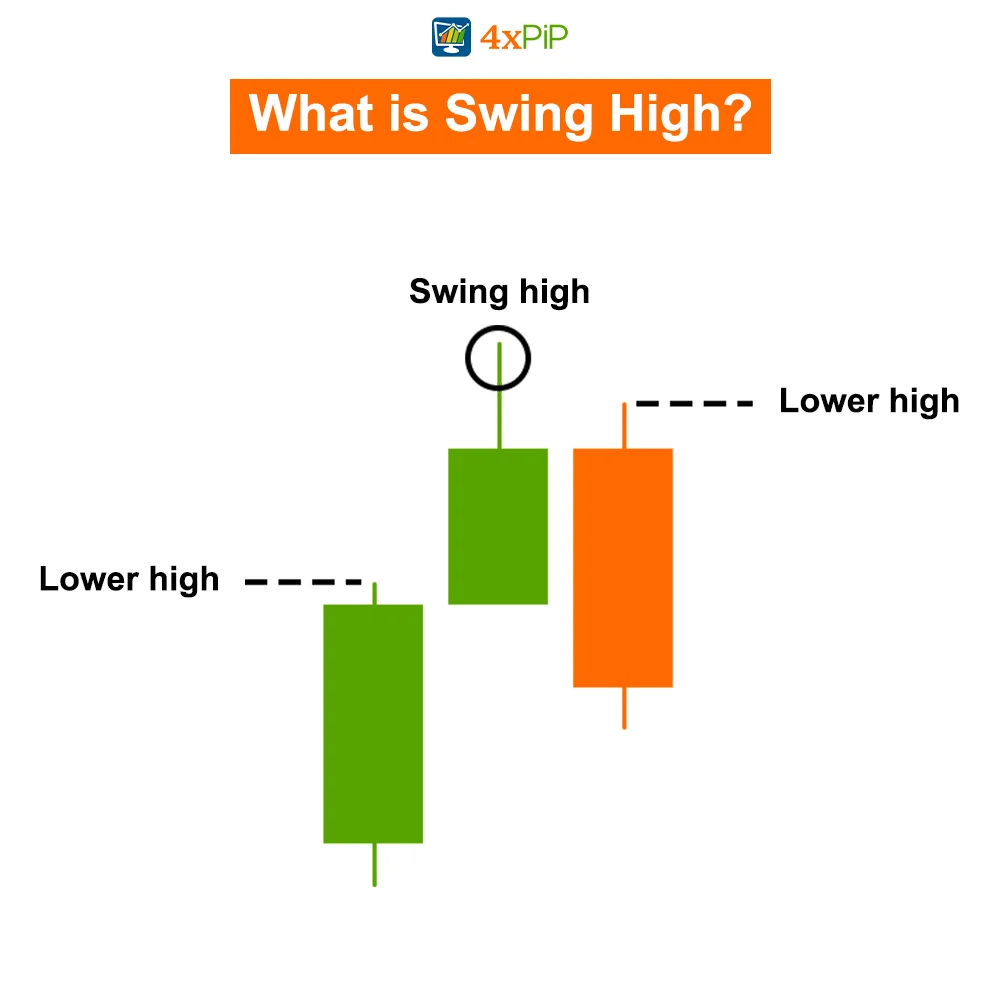
In technical analysis, a “swing high” is the highest point an indicator or a stock’s price reaches before going down. It happens when the highest point is higher than a certain number of points around it. If there are several higher swing highs in a row, it means the stock is going up. Swing highs are helpful for figuring out the direction and strength of a trend when trading in ranges or using technical indicators.
Understanding the Swing Low:
A swing low is the lowest point in the price of something during a certain time period. For example, on a daily chart, it’s usually the lowest price in the past month. Swing traders look at different time frames, and the swing low is the lowest price in the specific time frame they’re interested in – like a week, a few hours, or even just the last hour.
In the example below, points 1 and 2 are swing highs, while point B is the swing low. If someone wanted to track every high and low in a three-to-four-day period, both points would be considered swing lows. But for most people, only point B would be the swing low of interest.
Swing lows matter because they help traders figure out trends. Rising swing lows and swing highs show an upward (bullish) trend. If a low or high breaks the pattern and goes lower, it signals a possible trend change. Lower swing lows suggest a downtrend, while higher lows hint at a potential uptrend.
For investors holding a long position (owning something) in a security, swing lows help decide where to place a stop-loss order. According to Dow Theory, if the price drops below a previous low, it might be the start of a downtrend. If an indicator fails to make a new swing low while the security’s price is dropping, it could mean the downtrend is slowing down. Successive swing lows might also create a pattern indicating a trend reversal, like a double or triple bottom.
swing lows:
DOWNLOAD NOWTrading Swing Highs:
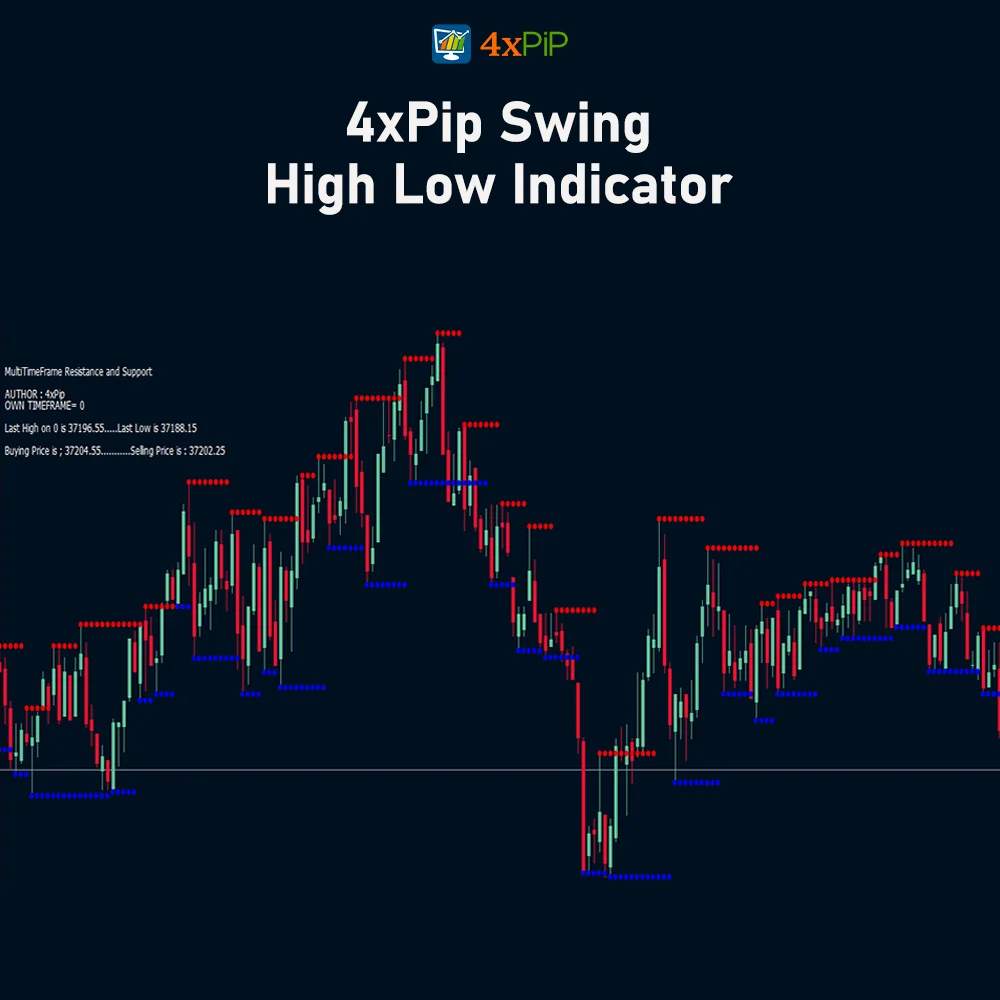
Trend Trading:
When you’re trend trading and the overall market is going down, look for points where the price briefly goes up before falling again. Once you spot one of these points, known as a swing high, and the momentum shifts back down, you might want to consider making a short trade. Use tools like the Relative strength index (RSI) and candlestick patterns to increase your chances of success. You can also set a stop-loss order to limit potential losses.
Going Long in Uptrends:
If the market is on an upward trend, some traders exit their positions when the price starts to drop from a high point. Additionally, tools like the Fibonacci extension can help you identify potential resistance areas and set profit targets.
Trading in Rangebound Markets:
When the price is moving sideways between support and resistance levels, consider going long near the swing lows at support. Wait for the price to get close to support, form a swing low, and then start moving higher. Use prior swing highs as exit points or decide whether to exit before the price reaches resistance. Similarly, you can go short near prior swing highs if the price starts to drop.
Indicator Divergence:
Watch out for indicator divergence, which occurs when the price is rising but indicators like RSI and MACD are not keeping up. This mismatch can signal a potential reversal in the price. However, be cautious, as divergence is not always a reliable signal and may happen too early or not lead to a price reversal. Despite its drawbacks, some traders still pay attention to divergence concerning swing highs and lows.
Swing Low Trading Strategies:
Trend Retracement: Traders look for a low point in a stock that’s going up to buy at a better price. They use tools like the stochastic oscillator, moving average, or trendline to figure out when the low point is about to happen. It’s better if the low point gets support from more than one indicator.
Before making a trade, wait for the stock’s momentum to go up again. For example, you can confirm momentum if the stochastic oscillator goes back above 20, or if there are two consecutive up days. Put a stop-loss order below the low point to close the trade if the price unexpectedly goes down. If the stock keeps going up, move the stop higher under each new low point.
Trend Reversal: After a long period of the stock going down, several low points might show that the market has hit the bottom. For this to work, the low point of each swing should be about the same. The latest swing low on the chart is often a bit below the previous one as smart investors clear out stop-loss orders before moving the market up.
Confirm a trend reversal when the price closes above the high point of the previous swing low. Set a target profit by subtracting the lowest point of the consecutive lows from the confirmation point. For example, if the lowest point is $50 and the confirmation point is $75, use the $25 difference ($75 – $50) as the first profit target.
Conclusion:
In conclusion, understanding swing lows and swing highs is crucial for traders navigating financial markets. By learning to identify trends, strategically trade in different market situations, and use technical tools effectively, traders can make better decisions. As we finish this guide, 4xPip suggests that traders explore trading strategies and market analysis further. Check out our advanced tools and get expert support at [email protected] for a trading experience that goes beyond limits. Let 4xPip be your trusted partner on the path to long-term market success. Happy trading!
FAQs
What is a swing low in trading?
A swing low refers to the lowest point in a stock’s price within a short time frame, aiding traders in identifying trend directions.
How is a swing low determined?
Traders assess the lowest point in price within a specific time frame, crucial for developing trading plans and predicting price changes.
What role do swing highs play in technical analysis?
Swing highs, the opposite of swing lows, signify the highest points in a stock’s price, offering insights into trend strength and direction.
How do swing lows contribute to trend identification?
Rising swing lows suggest an upward (bullish) trend, while lower swing lows hint at a potential downtrend.
What is the significance of swing lows for long-term investors?
For long-position investors, swing lows help determine optimal stop-loss placement based on Dow Theory principles.
How can swing highs be utilized in trend trading?
Traders can spot swing highs during a downward market trend, using tools like RSI and candlestick patterns for strategic short trades.
In uptrends, when is it advisable to go long?
Traders exit when prices drop from a high in an upward trend, using tools like Fibonacci extensions for analysis.
What strategies are effective in range-bound markets involving swing lows?
In sideways markets, going long near swing lows at support and using prior swing highs as exit points can be a viable strategy.
What is indicator divergence, and how does it relate to swing highs and lows?
Indicator divergence, observed when price and indicators like RSI don’t align, may signal a potential reversal, albeit with caution.
How do traders approach swing-low trading strategies, such as trend retracement and reversal?
Traders employ tools like stochastic oscillators and moving averages to identify low points, confirming momentum before making strategic trades. Trend reversal strategies involve recognizing consecutive swing lows and confirming a shift in the market.

